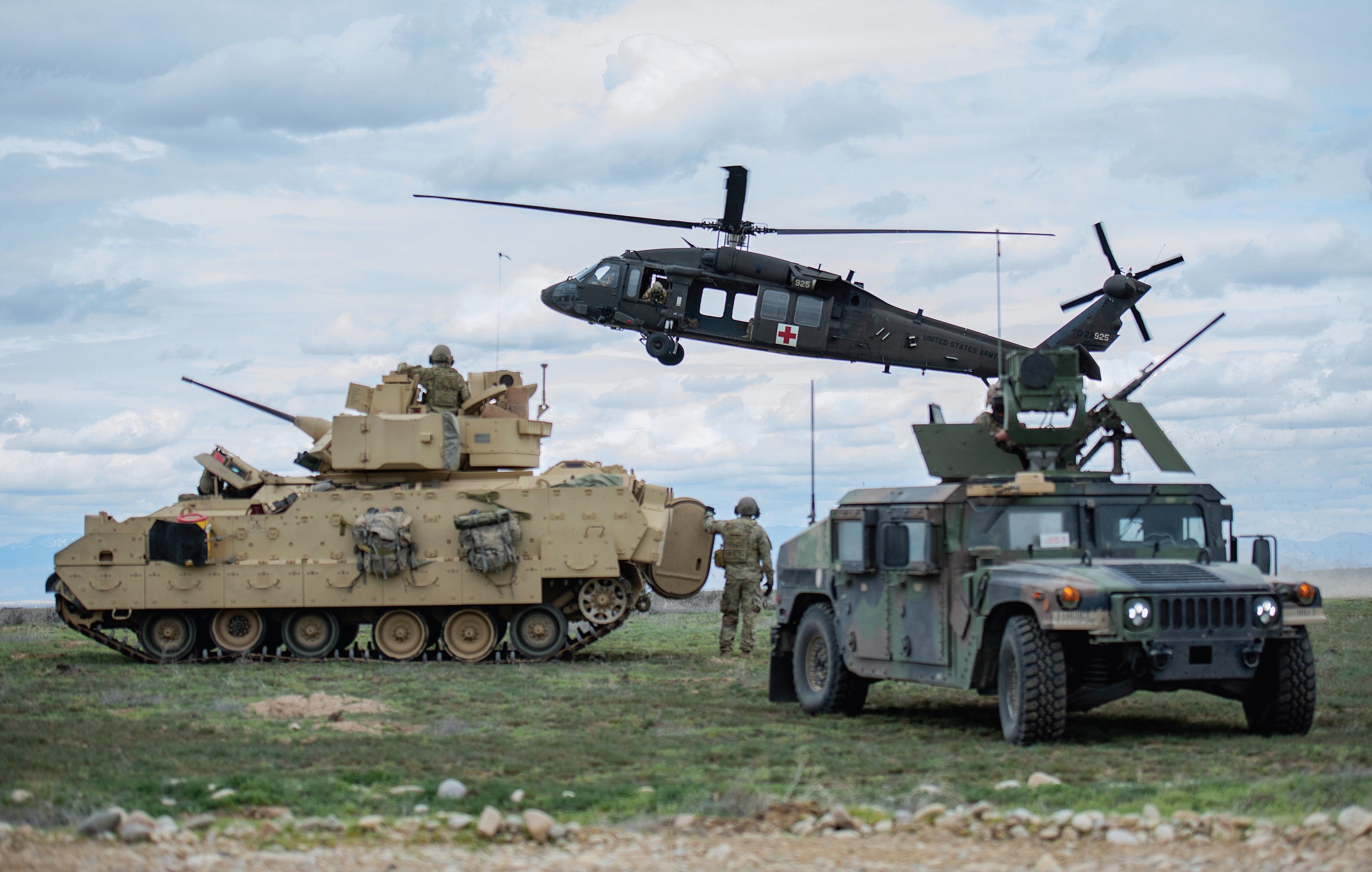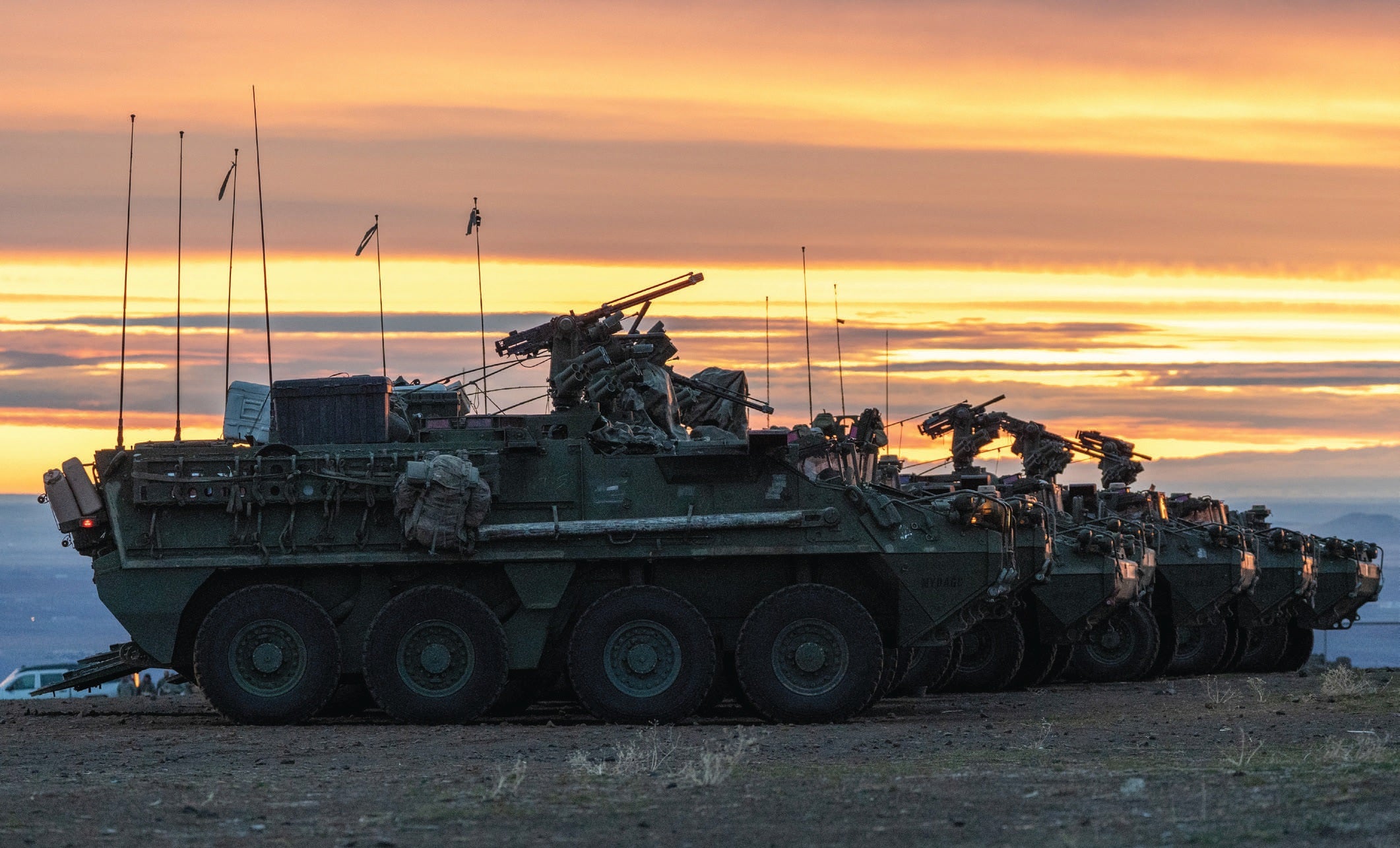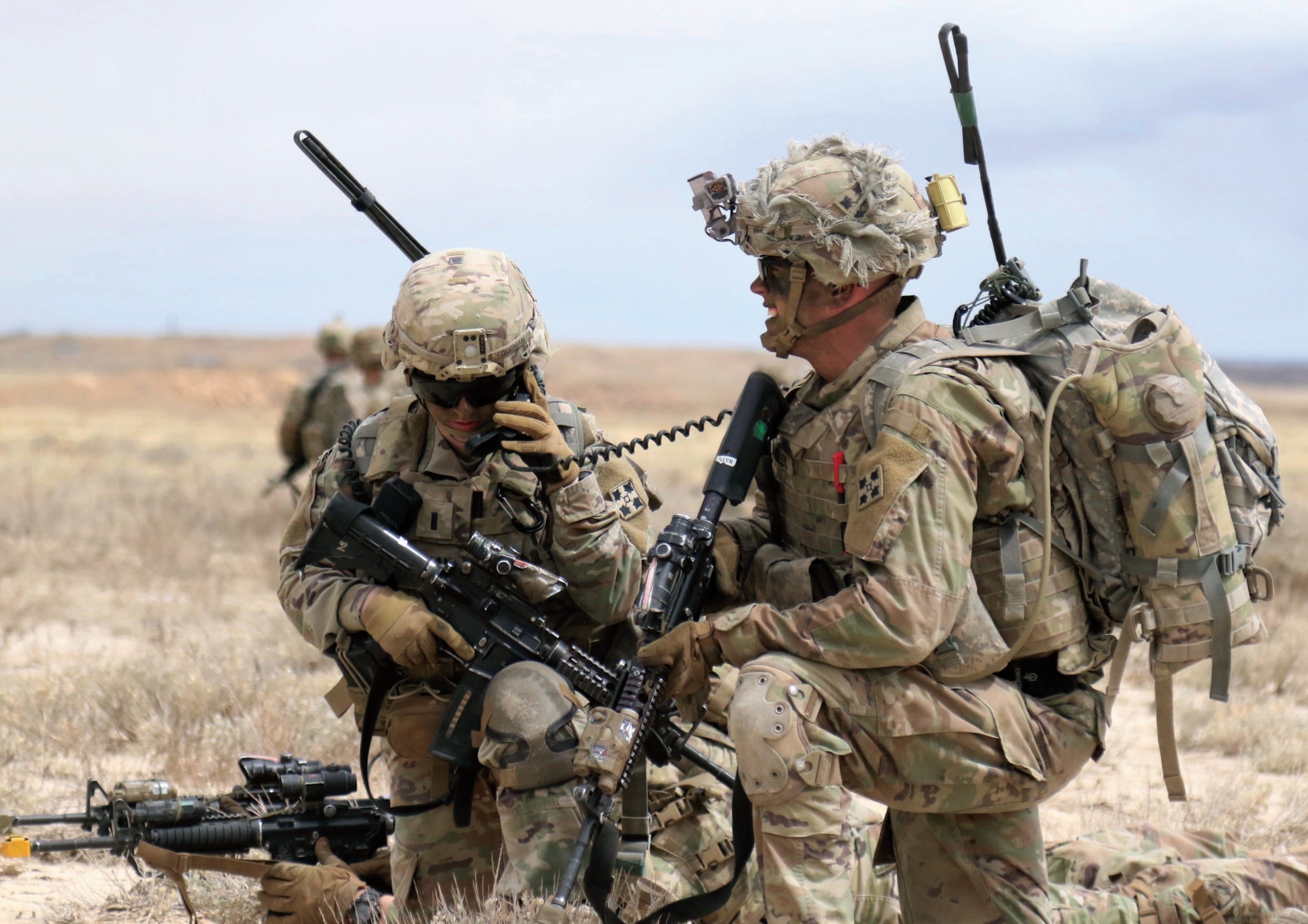A wave of new technology, recognition that fossil fuels won’t be around forever and concerns regarding climate change have led to expanding national security efforts to find new ways to supply energy and power to future battlefields.
The Army is working hard on solutions, but there isn’t one easy answer. Instead, Army and industry researchers are pursuing a multipronged approach to find ways to power new capabilities—vehicles, aircraft, weapons, sensors and data networks—while also reducing demand by making engines more efficient and developing quick and secure ways of maintaining power for forces under fire and on the move.
“There needs to be, and there is, work on a lot of different power and energy technologies in order to meet the varying needs of the Army, based on location, operational environment and things like that,” said Marnie Bailey, an electronics engineer and division chief at the U.S. Army Combat Capabilities Development Command C5ISR Center at Aberdeen Proving Ground, Maryland. C5ISR, which stands for command, control, communications, computers, cyber, intelligence, surveillance and reconnaissance, is a wide collection of capabilities but just a small part of the Army’s overall energy needs.
“It is a combination of a lot of different technologies, combined with doing what we can do to minimize power demand of some of these applications, that is really where we are going,” Bailey said of the center’s work. “We need to be able to utilize all types of energy optimally in order to power the loads.”

No Single Solution
Vehicles, aircraft and weapons are another big part of the energy requirements.
“A multidomain fight requires the Army to travel vast distances at greater speeds with increased lethality,” said Maj. Jesse Sheehan, an infantry officer assigned to the Maneuver, Aviation and Soldier Division at the U.S. Army Futures Command’s Futures and Concepts Center at Fort Eustis, Virginia, who is working with others on the Army’s Operational Energy Strategy. “That cannot occur without developing energy solutions. Therefore, we are working to enhance power and energy solutions to provide this support in the near, mid, far term. That includes improving energy use in current equipment while studying potential solutions as the technology becomes more mature.
“There’s no single solution,” Sheehan said. “Everything—hybrid, electric, nuclear, etc.—is all on the table.” What’s important, he said, is “to prioritize investments and research, as funding is not unlimited, and researchers must focus their efforts.”
Climate Considerations
The Army Climate Strategy unveiled Feb. 8 includes an interim requirement for having hybrid or fully electric nontactical vehicles, and a goal of fielding hybrid-drive tactical vehicles, by 2035 and fully electric tactical vehicles by 2050, with a means to recharge them in the field.
There have been some successes. “The Army has been working to reduce the fossil fuel consumption of its vehicle fleets for many years, and recent gains are encouraging,” Army officials said in the strategy, citing the Tactical Vehicle Electrification Kit that has reduced average fuel consumption by up to 25% while providing more onboard electrical output per application. A side benefit is the kit has an anti-idle system that “shuts off a vehicle’s engine during halts, while still providing power to vehicle accessories.” As anyone who has been in the field knows, most contemporary Army ground vehicles run their engines nonstop to provide power to auxiliary systems, burning fuel and making noise.
Vehicles—nontactical and tactical—are a big part of the strategy, but this is an area where big results are a long way off. The Army hopes to have a first prototype of an all-electric light reconnaissance vehicle by September 2023, but the fielding of all-electric vehicles remains a distant goal.
Better Batteries Needed
A June 2021 report by the National Academies of Sciences, Engineering, and Medicine, “Powering the U.S. Army of the Future,” had basically bad news, concluding that purely battery-powered combat vehicles that could be recharged in the field “are not likely to be technically feasible” by 2035, the time frame of the group’s study. “JP-8, diesel, and/or biodiesel will continue to serve as the primary source of battlefield energy and power for the foreseeable future,” says the Committee on Powering the U.S. Army of the Future, which prepared the report.
All-electric tactical vehicles are not currently feasible, according to the independent report. Battery energy is “roughly two orders of magnitude less” than JP-8, and recharging electric vehicles in a short period of time requires massive quantities of power not available on the battlefield. It might happen in the future, but not soon, the experts said, citing two reasons. First, current technology isn’t capable of creating lightweight batteries. Second, recharging an electric vehicle on or near the battlefield would take too long. The report estimates it would take 15 minutes to recharge a 50-ton combat vehicle. A brigade combat team has over 30 vehicles, so it would take more than seven hours to recharge with a 29-megawatt power source.
The report also puts the problem into perspective. “Since World War II, the Army is using approximately 20 times more energy per soldier, while reducing the number of soldiers by a roughly equivalent amount. This direction will likely continue in the future and highlights the importance of energy supply and management,” the report says.

Power Consumer
The Army’s power needs are big and growing at a time when it also is trying to lose weight in how much dismounted soldiers must carry and the weight of better armored vehicles. Also in mind is that future battles could require units to be self-sustaining for longer periods.
Improved batteries are a big part of the challenge, but there are far more challenges to solve, said Meredith Reed, the U.S. Army Research Laboratory’s Energy Division chief. “Even if we were to get the batteries where they need to be, there is the fact we’ve got to recharge them,” she said. This is why the short-term move is to have hybrid-electric engines that could work on vehicles and aircraft.
“Going with the hybrid approach can not only extend range, but it can also enable other types of abilities in the field, like silent watch and things like that,” she said. “There isn’t one problem to solve to get the final solution. It is going to take more time and investment.”
The National Academies report has a solution that could fully recharge batteries in a heavy tactical vehicle in just six minutes, Reed said. It requires a portable nuclear reactor. Such a device would weigh 40 tons, takes three days to set up and two days to cool down after use, presenting serious challenges. There are efforts underway to develop an expeditionary nuclear power plant by 2027, but the device wouldn’t generate enough energy to quickly recharge a heavy combat vehicle, at least not by 2035.
Nuclear power plants are not really expeditionary, the National Academies study concludes, but “they may have an appropriate place in semi-stationary bases located in permissive locations.” Solar trailers and rollup solar panels, which are commercially available today, “can provide expeditionary personnel with a fallback battery charger or power source for laptop computers and radios,” the report notes. But that isn’t the same as recharging batteries on an all-electric tank.
A Distant Horizon
Elise Joseph of Futures Command’s Science and Technology Directorate said the National Academies “looked primarily at vehicles, and it brought up some good points.” Fully electric vehicles are not feasible for the battlefield yet, but “we are looking at hybrid vehicle electrification primarily right now.”
“To expect us to have a fully all-electric combat fleet in the near term is just too far of a reach right now,” she said.
There are challenges to overcome. Batteries are still “too big and too heavy at this point,” Joseph said. “Battery technology itself needs to advance,” she said, noting that vehicles would have to tow trailers filled with batteries behind them using current technology.
Advances are also needed in charging vehicles. “As we go all-electric, we need some means of charging the vehicle out in the field,” Joseph said.
Hybrid propulsion, the combination of battery power and diesel fuel, is the stopgap measure “because it takes benefit from both battery or fuel cell technologies to do range extension or have better onboard power, but still leveraging that diesel for the primary propulsion because it does have such a high power and energy density to it. That is hard to match.”

Ongoing Efforts
In December, Army officials told lawmakers on the House Armed Services Committee that the Army’s ongoing transformation is an effort “to electrify the battlespace and improve the overall efficiency of the force,” something that “will ultimately reduce the total amount of energy required.”
Operational energy is a critical ingredient when fighting and deterring wars, the officials told lawmakers. This includes energy for installations, which must be prepared to maintain future capabilities including tactical electric fleets, and for deployed forces, where the operational landscape is changing.
“The U.S. must be prepared to deploy to theaters of operation with contested lines of communication and supply, and to prevail against nations or proxy forces with near-peer capabilities,” officials said.
Long-term gains may come from fielding electric tactical ground vehicles, but large-scale use is years off, the Army officials said. Available technology, like anti-idle systems, can reduce fuel consumption by 25%, with hybrid-electric systems able to save even more. That would provide extended range, more onboard power for things like direct-energy weapons and electrified armor, and could have reduced maintenance expenses, the officials said. Electric motors are also quieter and have a reduced thermal signature, factors that increase crew safety.
Energy reductions are also underway in aviation, with significant reductions expected from unmanned missions that will have newer propulsion systems that fly higher and faster than manned aircraft, with bigger payloads and longer flight durations, according to the Army.
What the Army needs is a way to get a battlefield edge by fielding new energy capabilities, according to the service.
Potential adversaries continue to improve their ability to contest the lines of communication, deny access and target U.S. forces, the Army officials said. One way the Army is seeking to mitigate those risks is to reduce the demand for supplies and services, including fuel, which will extend range and
operational endurance, maintain battlefield momentum and increase freedom of action, all while minimizing soldier exposure to enemy action, the officials said.
To get there, the Army must increase warfighter capability by increasing operational endurance, duration and reach, officials said. This requires decreasing energy requirements so maneuver units can autonomously operate. Forces also need energy security and increased resilience “so that we can accomplish our missions despite disruptions from the enemy, from the weather and the terrain,” officials said.

